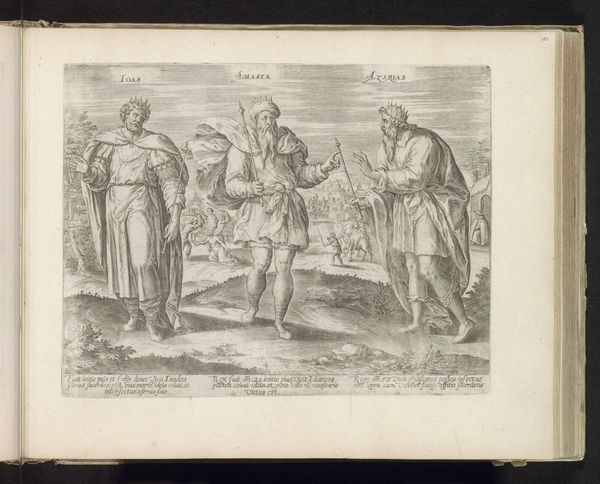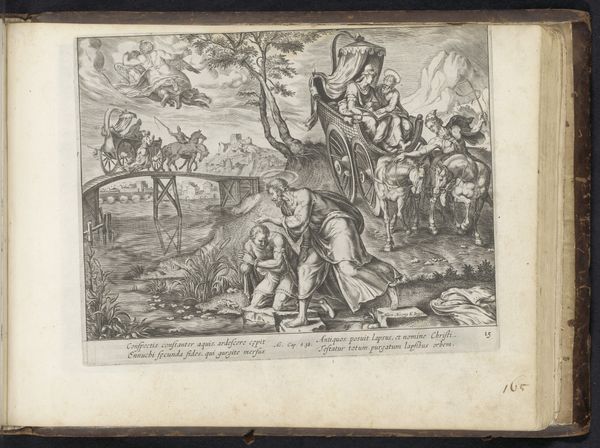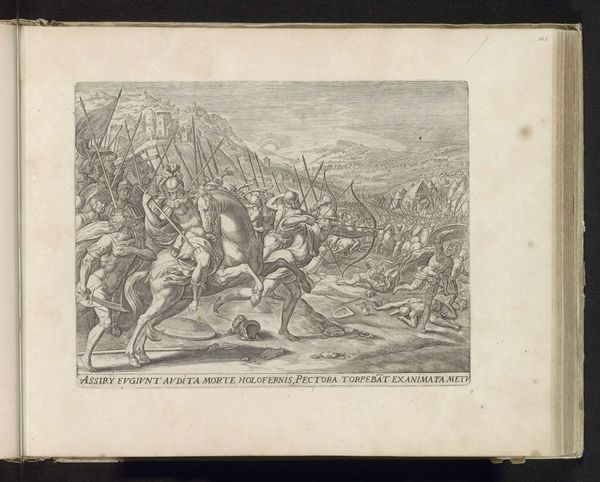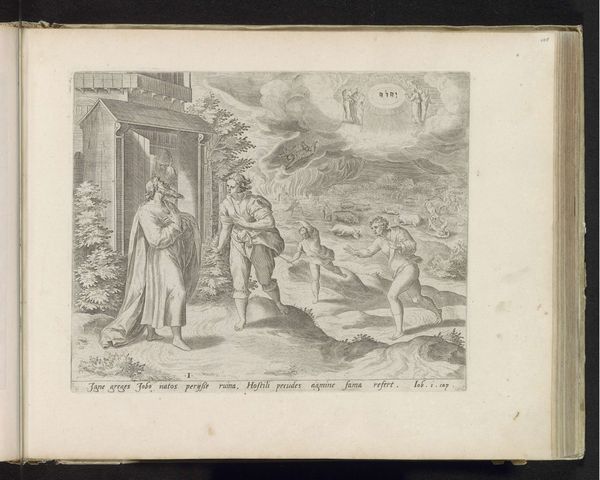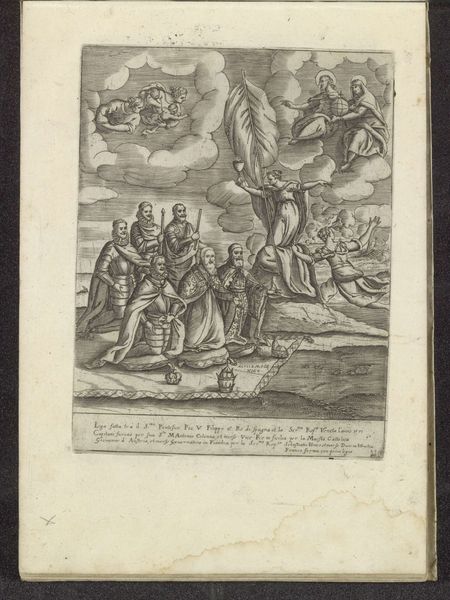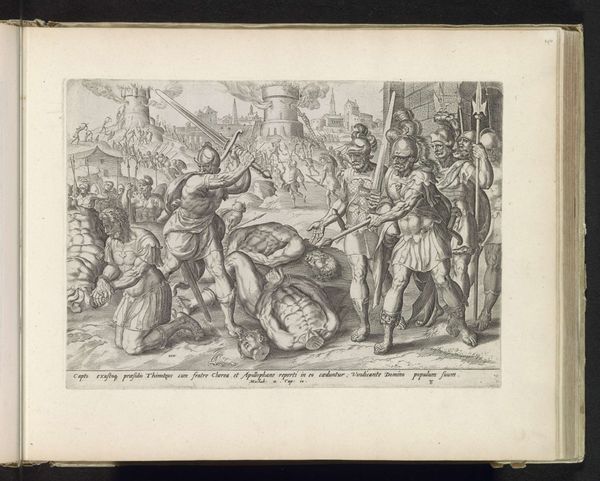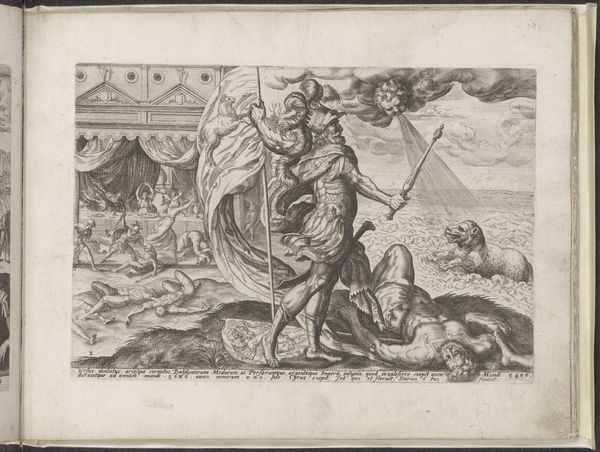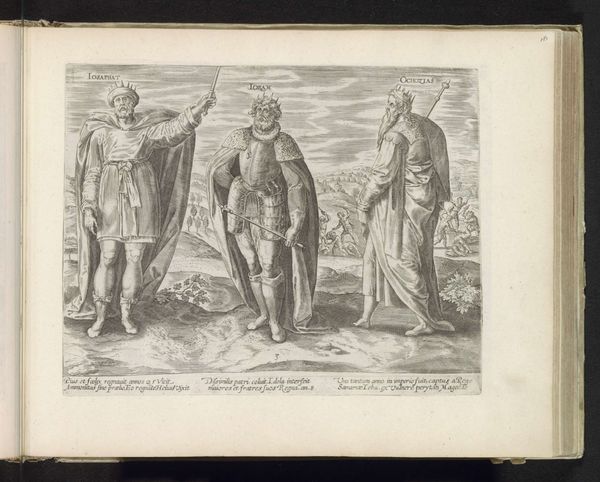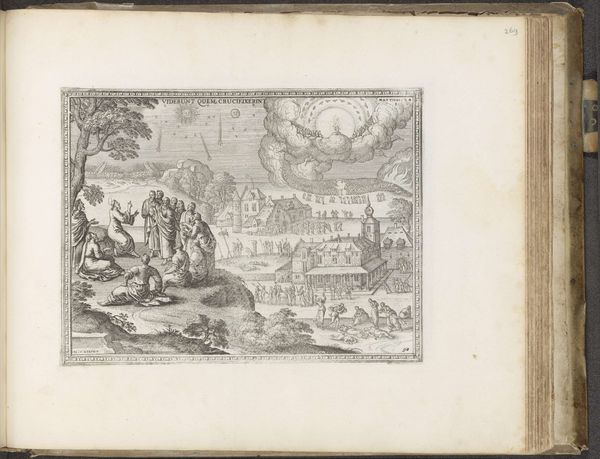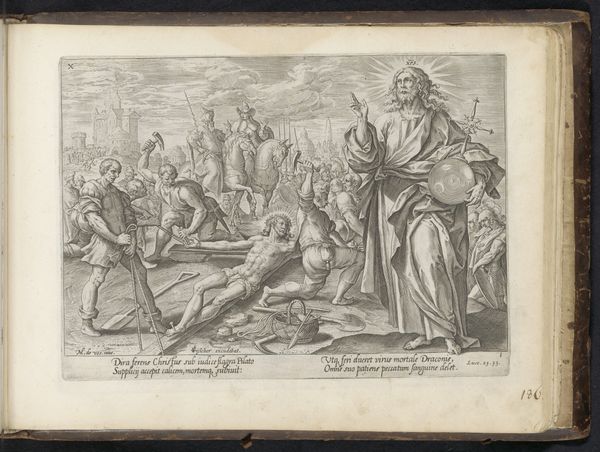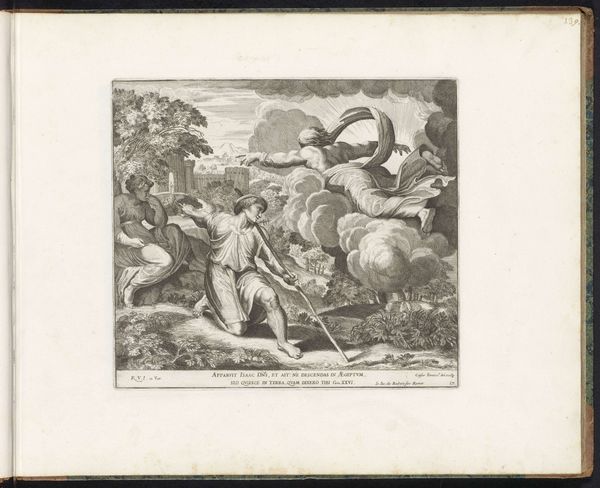
Dimensions: height 220 mm, width 285 mm
Copyright: Rijks Museum: Open Domain
Curator: This is "Sedekia," an engraving by Jan (I) Snellinck, dating back to 1585, now held in the Rijksmuseum collection. Editor: My first impression is one of dread. The swirling clouds, the tiny figures...it speaks to the immense, impersonal forces at play. Curator: Precisely. Snellinck has captured a pivotal scene from the Old Testament. Sedekiah, the last king of Judah, stands prominently in the foreground. Observe how he's positioned: set apart but still part of the unfolding destruction of his kingdom. Note his attire: Roman armor, evoking authority, yet rendered futile. Editor: Right, the garb and bearing aim to communicate authority, but the larger scene diminishes him. This print stages Sedekiah amidst a geopolitical catastrophe, gesturing vaguely, but helpless to halt the consequences of broken treaties and allegiances with the Egyptians against Babylon. Curator: Indeed. Look at the background. The dense cluster of figures, their expressions unreadable at this scale, contributes to the sense of a collective destiny, and their march away from the towering walls of a besieged city under a tumultuous sky that clearly signifies divine judgment. Editor: It's interesting how the scale shifts between Sedekiah in the foreground and the miniaturized suffering in the background, placing Sedekiah in a very personal story, while also highlighting themes of power, responsibility, and the brutal realities of war, exile and diaspora. Also, this moment is deeply ingrained in cultural memory. Curator: The image does underscore the long tradition of blaming leaders for the downfall of societies and peoples. Consider the power of narrative imagery like this in shaping perspectives through generations, constantly reiterating lessons and acting as visual reminders. Editor: Absolutely. And the fact that it is rendered as a print makes it especially relevant when we consider circulation and readership within different strata of society. What kind of messages was it designed to deliver? To whom, exactly? Curator: Questions that continue to resonate through history, and continue to provoke discussions surrounding justice and power. Thank you, those questions have opened even broader interpretive pathways in relation to Snellinck's engraving. Editor: Agreed, exploring art through the lens of cultural context helps us understand its continuing significance. This narrative around culpability of leadership is both ancient and timely.
Comments
No comments
Be the first to comment and join the conversation on the ultimate creative platform.
